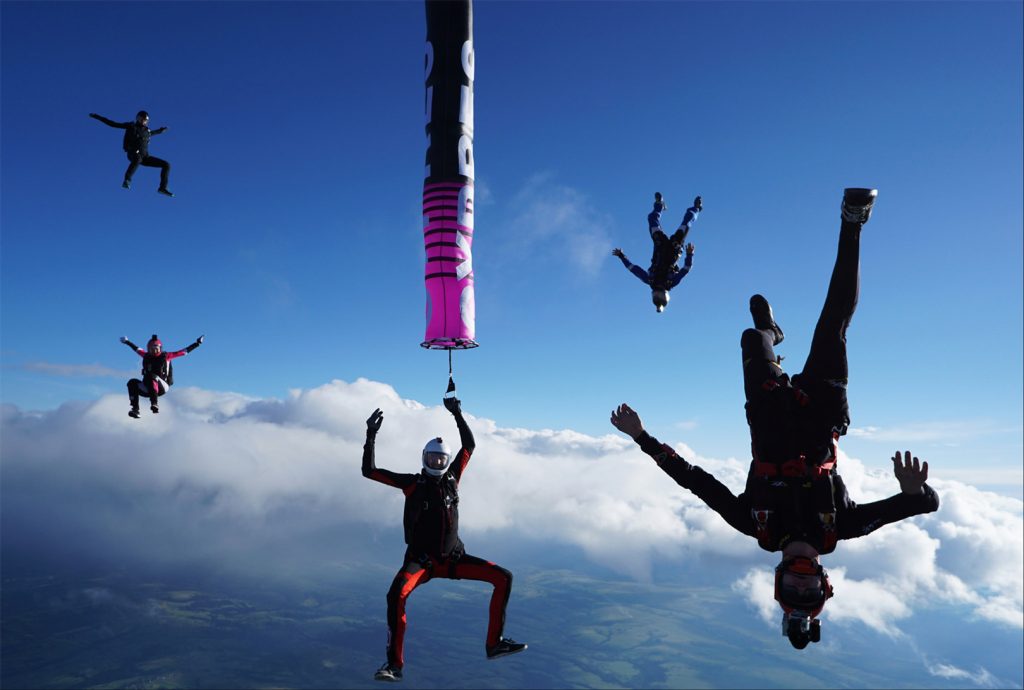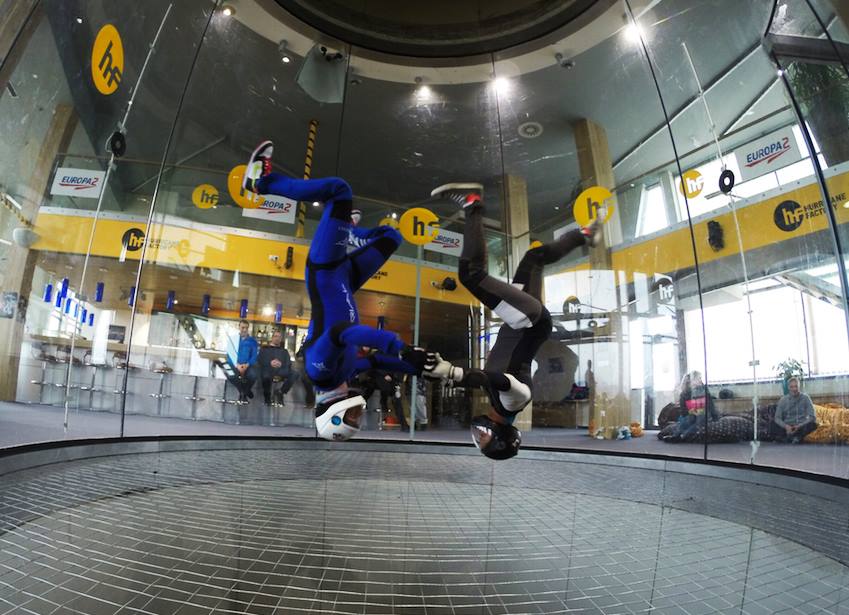Originally published on Dropzone.com in June of 2017.
Learning to fly upside down can be tough. Once a student reaches the point at which the coaches and instructors in charge of their progression and safety invite them to start, he or she should be suitably skilled in the other main orientations of flight in order to manage the variables involved in practicing head down with confidence. However, all too often this is not the case – and although things are improving as training methodology evolves and becomes more widely understood – too few students invest as much time as they should in the right foundational skills in their big rush to get to head down.
The main thrust of these articles is to highlight some of the many ways that various elements of freefly training feed into and stack upon each other to create a deeper understanding of how flying actually works. The process of learning head down is a great example of exactly how many things someone could and should be able to do before they begin with those expensive headstands on the net – in order to make the whole endeavour much smoother, easier, cheaper, and vitally – more fun.
Safety First!
On the most basic level, good backflying and sitflying skills will keep you safe while learning head down. The ability to properly control yourself in these positions on high windspeeds is the minimum by which you should be allowed to get started. Even for those us totally devoid of maths, the ability to reset yourself onto the net in just a handful of seconds after needing to bail instead of fifteen or twenty (or more) spent bouncing around the top of the tube is clear to see.
Investing in your backfly and sitfly early on will save you a great deal of time and money down the road.
In addition, every bit of progress you make in the other areas of your training feeds directly back into your ability to fly head down. Doing this other stuff is more fun and easier on your body than spending hour after hour on the net.

How Does Head Up Help?
Aside from simply being able to safely get in the tube on wind speeds high enough for head down flying, many of the ways you sitfly about the place can be practiced and then switched the other way up as a means of making you brain understand what is going on. The most efficient way to figure out a line or a sequence of moves when you are first learning on your head can be to get it right with some sitfly first where it is easier to maintain awareness and fly with a position in which you are stronger – then flip it over. The way movements are flown from the one orientation to its opposite can be very similar – the space, the lines and the subtleties are very often one and the same.
How Does Carving Help?
Carving your way up from low wind speeds on both your belly and back help your head down flying from the very start by helping your brain to recognise the single most important rule to maintaining positional awareness:
When you go from head up to head down – left is right and right is left.
Once you have got the hang of static head down, moving around is next. Understanding how carving works and practicing it on low speeds is the way to both good technique and a much quicker mastery of it on high speeds. The best way to frame the process is to think of carving in the tunnel as learning the ability to fly at any angle and velocity as opposed to separating high speed and low speed into two categories. Once you get steep enough, the skill set you need to apply to carving becomes closer to that of head down flying – but the most important thing to understand is the fluidity. The golden moment is when your carving drills and your head down meet in the middle.

How Do Layouts Help?
Proper layouts are tough to get right. Frequently people have to do a great many, working through the smallest refinements in technique before nailing them. Training layouts teaches you body many things, but within the context of this article the most prescient value they have for helping with your head down skills is to get your body up over your head and travelling through the axis you need the most control of when flying (or transitioning through) a head down position. Head down is scary at the start – the wind is fast and is hitting your control surfaces from the wrong sides – having some layouts under your belt will help with being relaxed at the idea of your feet being high up and your body low down.
The thing to remember is that all the pieces matter. While it is entirely possible to learn how to fly head down buy achieving the minimum possible requirements to be allowed to try, and then spend a great deal of time and money hammering away at it the way people used to do all the time – there is now a way that is more fun, less tiring, and that will ultimately give you a stronger skill set, better understanding and more useable tools for skydiving.
